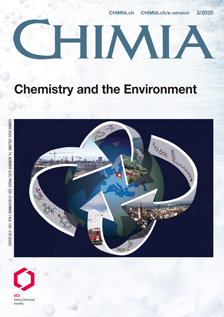Inhibition of Extracellular Enzymes Exposed to Cyanopeptides
DOI:
https://doi.org/10.2533/chimia.2020.122PMID:
32197669Keywords:
Aquatic enzymes, Biogeochemical cycling, Cyanobacteria, Harmful algae bloom, Microbial loopAbstract
Harmful cyanobacterial blooms in freshwater ecosystems produce bioactive secondary metabolites including cyanopeptides that pose ecological and human health risks. Only adverse effects of one class of cyanopeptides, microcystins, have been studied extensively and have consequently been included in water quality assessments. Inhibition is a commonly observed effect for enzymes exposed to cyanopeptides and has mostly been investigated for human biologically relevant model enzymes. Here, we investigated the inhibition of ubiquitous aquatic enzymes by cyanobacterial metabolites. Hydrolytic enzymes are utilized in the metabolism of aquatic organisms and extracellularly by heterotrophic bacteria to obtain assimilable substrates. The ubiquitous occurrence of hydrolytic enzymes leads to the co-occurrence with cyanopeptides especially during cyanobacterial blooms. Bacterial leucine aminopeptidase and alkaline phosphatase were exposed to cyanopeptide extracts of different cyanobacterial strains (Microcystis aeruginosa wild type and microcystin-free mutant, Planktothrix rubescens) and purified cyanopeptides. We observed inhibition of aminopeptidase and phosphatase upon exposure, especially to the apolar fractions of the cyanobacterial extracts. Exposure to the dominant cyanopeptides in these extracts confirmed that purified microcystins, aerucyclamide A and cyanopeptolin A inhibit the aminopeptidase in the low mg L–1 range while the phosphatase was less affected. Inhibition of aquatic enzymes can reduce the turnover of nutrients and carbon substrates and may also impair metabolic functions of grazing organisms.
Downloads
Published
Issue
Section
License
Copyright (c) 2020 Christine M. Egli, Regiane S. Natumi, Martin R. Jones, Elisabeth M.-L. Janssen

This work is licensed under a Creative Commons Attribution-NonCommercial 4.0 International License.







